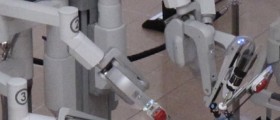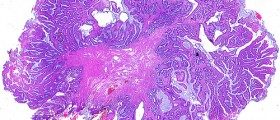
Hemorrhoids are a very painful condition created by the congestion of the internal and external venous plexuses around or inside the anal canal. There are four degrees of hemorrhoids and the categorization is as follows and the first stadium hemorrhoids do not have outer prolapse but they do bleed; the second stadium hemorrhoids have outer prolapse from the anus during defecation but return sooner or after the third degree hemorrhoids have to be retracted manually; the fourth degree hemorrhoids cannot be retracted at all. The symptoms of this condition include: bleeding, swelling, itching and mucus coming out of the hemorrhoids.
There are non-surgical option for removing hemorrhoids and those are a change in diet, application of topical medicaments and soaking the area in warm water, which reduces the symptoms temporarily. The surgical techniques have been used and improved for decades and present a good and reliable way of treating this condition. The oldest and most basic treatment technique is the Milligan-Morgan technique where the hemorrhoids are removed while leaving open incisions to avoid stenosis. An improvement of this technique is the Ferguson technique, where the incisions are left half-open or completely closed. Stapled hemorrhoidopexy involves the use of staples to remove the hemorrhoids and immediately stop the bleeding and return the tissue to the correct anatomical position. The harmonic scalpel technique utilizes ultrasound to cut off the hemorrhoids and coagulate the wound at the same time. Electrosurgery is similar to this procedure, but it uses a burning tool to burn off the hemorrhoids and then the wound. Laser surgery is a recent technique involving laser technology to removes the hemorrhoid with great precision, coagulating the wound and allowing for faster healing to take place. the newest available technique is the atomizing technique, where an atomizer is used to reduce the hemorrhoids to particles of mist or vapor and instantly vacuuming them away from the wound.
The possible complications of surgical removal of hemorrhoids in the early stages are severe in pain, wound infections, bleeding and swelling, incontinence and difficulties in urination. Some of the late complications are: forming skin tags, recurrence, anal fissure, anal stenosis, minor incontinence and fecal impaction.
All of these operations are considered reliable and safe. If the patient closely follows the prescribed post operative procedures the complication can be avoided. All of these factors have to be discussed with the doctor before surgery to ensure the best possible care and healing.

















Your thoughts on this
Loading...